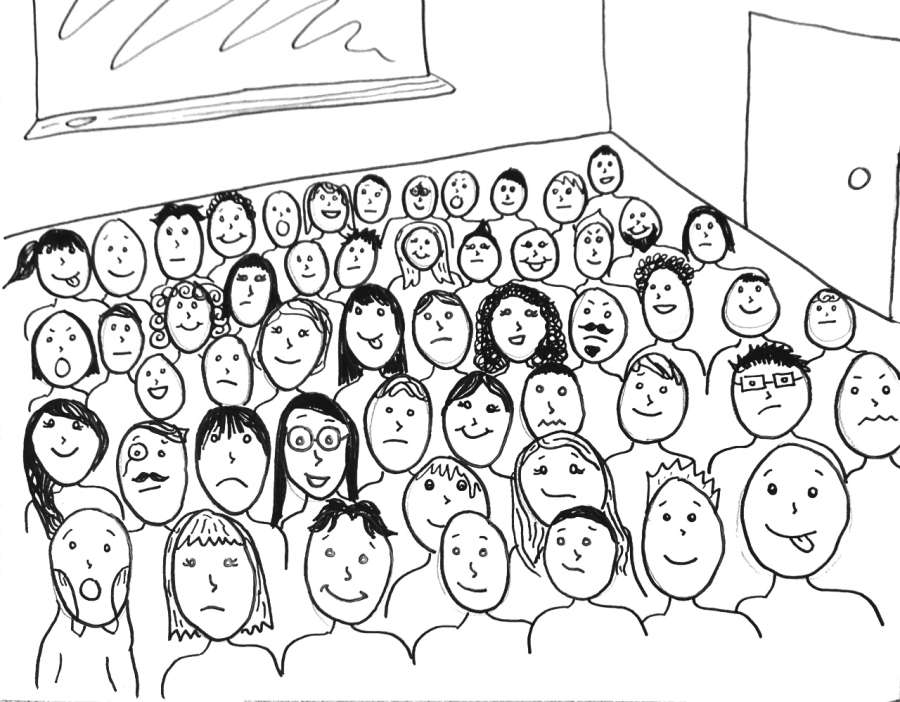Large class sizes prove a concern for many
Complex schedule plans create larger than usual class sizes
Registration is just around the corner, and with that comes a long list of decisions not only for students but also the administration. The most important being class size.
After students register in February, the Assistant Superintendent, Assistant Principal, and Freshman Coordinators meet with each department chair and decide how many sections each course will get and how big the classes will be.
“It’s probably one of the most complicated things I have ever been involved in,” Assistant Principal Michael Lee said.
In the case of an awkward enrollment number, such as when a course is too big for one section but too small for two, waitlists are created. This mainly happens for summer school or early bird classes, but waitlists sometimes have to be made for classes during the day.
“For instance, this year in AP Physics 1 the enrollment was really tight, so we had to make a judgment call; do we want two really tight sections or three sections where they’re all small classes, and we chose to run two really full classes,” explained Science Department Chair Jason English. “We want to give every student the classes they want to take, but sometimes it just can’t happen.”
Junior Zarine Gidwaney experienced this first hand as one of the people put on the AP Physics 1 waitlist. She applied for a level change slightly late, near the end of February, but after finishing the paperwork she was told there were no spots left.
“I was kind of sad, because I really wanted to get in. I would check in every month, and then even going into summer I was still on the waitlist,” Gidwaney said. “They told me maybe a week or two into school someone will drop out and I can get a seat. So the entire summer it was inthebackofmymindandIwas anxious.”
A student dropped the class before school started, and Gidwaney was able to take their seat.
“I remember going on Canvas at 11 p.m. and seeing a new ‘Barrett – AP Physics’, and I was so happy that I got in,” she said.
Students are not the only ones affected by these administrative decisions. With the school working to get every student in the classes they want, the burden to manage difficult class sizes often falls on teachers.
Within a single language class there might be students at multiple levels because there are not enough four-level students to create their own class.
“It complicates things to teach that class, because as a teacher I’ve got to figure out a way to either differentiate my teaching between levels or use some of those more experienced students to help the other kids out,” Lee said.
Other problems such as being unable to write letters of recommendation, or having enough time for every, student persist. Some teachers are worried.
“It’s feeling like we’re getting to the point where the class sizes are having a negative effect on teaching here. We’re not at the breaking point, of course,” Todd Maxman, a Social Studies teacher, said. “Our class sizes seem really good compared to Chicago Public Schools, but taking advantage of the talent of the teachers here can push people over the top and then they’re not doing their best.”
Maxman’s worries aren’t unfounded. While New Trier’s average class size has hovered around 22 for the last four years, the majority of classes are above this, with a few classes in single digits.
According to the 2019 Class Size report, there are 320 classes with over 24 students, not including KW, 16 of which have 30 students. On the flip side, there are 35 classes with 15 or fewer students, the lowest class size being an English 2E class of 7.
“You can look at an average and say it looks good, but then look deeper and find a 4th period class may have 30 people. My head explodes just thinking about teaching that class,” Maxman said.
These large numbers aren’t going unnoticed by the student population either. When Gidwaney first entered her AP Physics class, “it seemed like the class was completely full already and they just added a seat,” making it a 27 kid class.
“Just coming from a level 3 to an AP is really intimidating. Even though they’re nice kids, it’s still intimidating and sometimes I’m scared to ask questions,” Gidwaney explained. “And then on top of that there’s a lot of them, so I’m even more worried.”







































